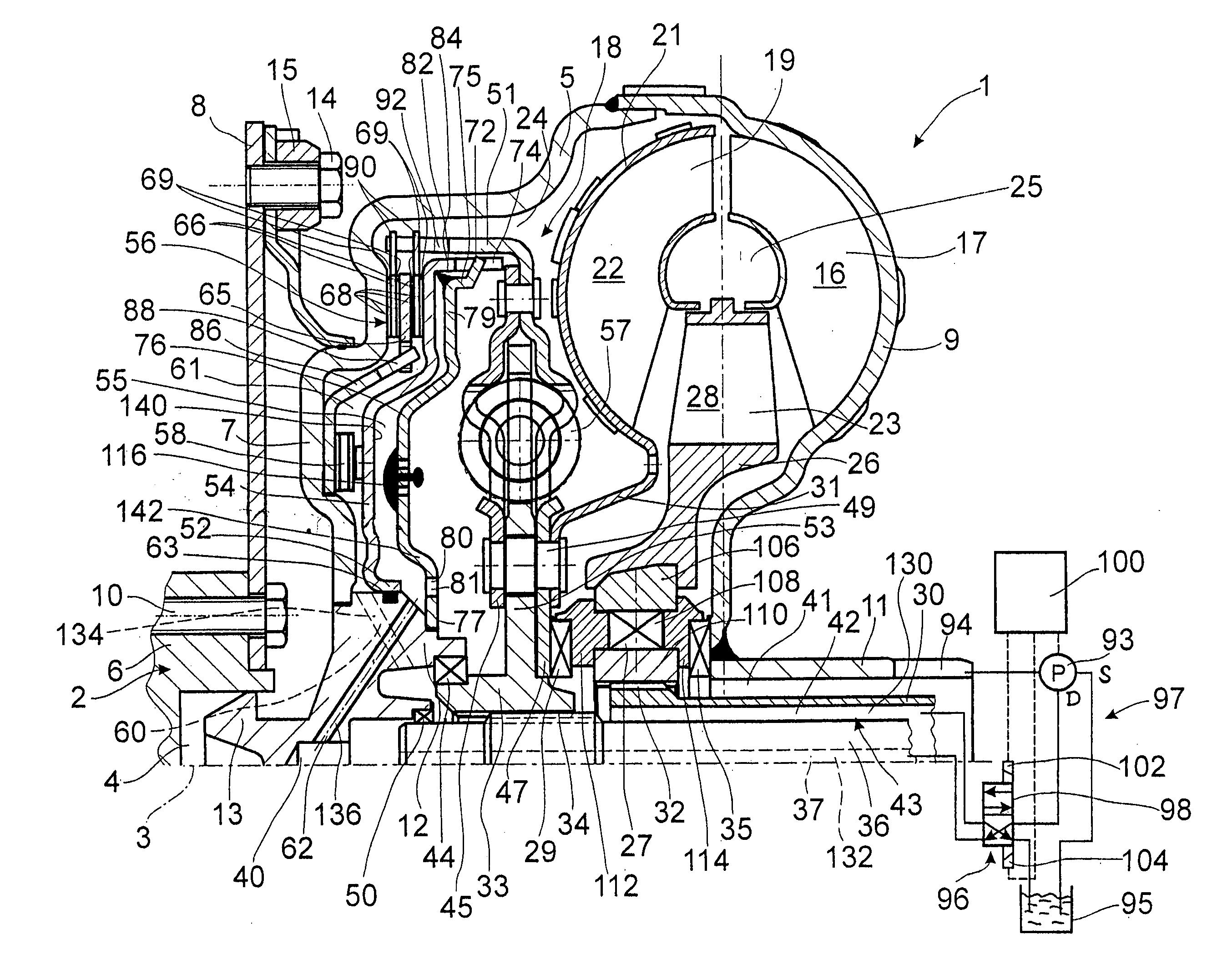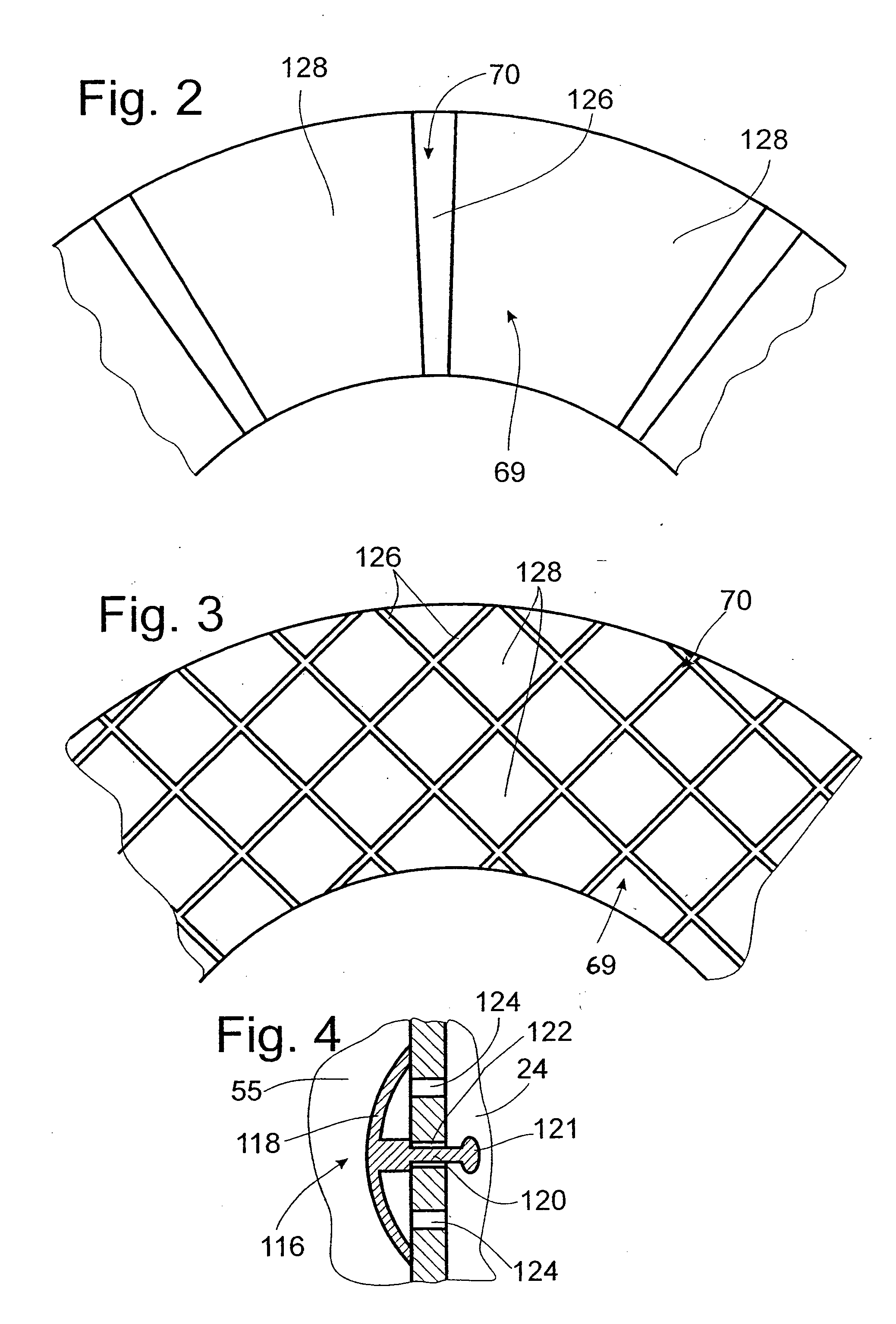Hydrodynamic clutch device
a technology of hydraulic clutch and bridging clutch, which is applied in the direction of rotary clutches, fluid couplings, gearings, etc., can solve the problem that the bridging clutch does not form a sealing point, and achieve the effect of almost completely eliminating the loss of slippage in the area of the bridging clutch
- Summary
- Abstract
- Description
- Claims
- Application Information
AI Technical Summary
Benefits of technology
Problems solved by technology
Method used
Image
Examples
Embodiment Construction
[0023]FIG. 1 shows a hydrodynamic clutch device 1 in the form of a hydrodynamic torque converter, which is able to rotate around an axis of rotation 3. The hydrodynamic torque converter has a clutch housing 5. On the side of the housing facing a drive 2, such as an internal combustion engine with a crankshaft 6, the housing has a cover 7, which is permanently connected to a pump wheel shell 9. This merges with a pump wheel hub 11 in the radially inner area.
[0024] To return to the housing cover 7, this cover has, in the radially inner area, a bearing journal hub 12 carrying a bearing journal 13. The bearing journal 13 is mounted in a recess 4 in the crankshaft 6 to center the clutch housing 5 on the drive side. The housing cover 7 also has a fastening mount 15, which serves to attach the clutch housing 5 to the crankshaft 6 by way of a flexplate 8, namely, by means of fastening elements 14, preferably in the form of bolts screws. The flexplate 8 itself is attached by fastening eleme...
PUM
 Login to View More
Login to View More Abstract
Description
Claims
Application Information
 Login to View More
Login to View More - R&D
- Intellectual Property
- Life Sciences
- Materials
- Tech Scout
- Unparalleled Data Quality
- Higher Quality Content
- 60% Fewer Hallucinations
Browse by: Latest US Patents, China's latest patents, Technical Efficacy Thesaurus, Application Domain, Technology Topic, Popular Technical Reports.
© 2025 PatSnap. All rights reserved.Legal|Privacy policy|Modern Slavery Act Transparency Statement|Sitemap|About US| Contact US: help@patsnap.com



